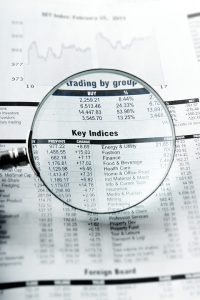Bond markets play a crucial role in the financial landscape of Australia, providing investors with a diverse range of fixed-income securities to choose from. These markets allow governments, corporations, and other entities to raise capital by issuing bonds to investors. In this article, we will take a closer look at the Australian bond market, its key features, and the investment opportunities it presents.
Overview of the Australian Bond Market:
The Australian bond market is one of the largest bond markets in the Asia-Pacific region, with a wide variety of issuers and instruments available to investors. The market is primarily comprised of government bonds, corporate bonds, and municipal bonds. Government bonds, also known as Commonwealth Government securities (CGS), are issued by the Australian government to fund its operations and meet its financial obligations. These bonds are considered low-risk investments and are highly liquid, making them popular among conservative investors seeking stable returns.
Corporate bonds, on the other hand, are issued by companies to raise capital for various purposes, such as expansion projects, mergers and acquisitions, or refinancing existing debt. These bonds typically offer higher yields than government bonds, but they also carry higher risks, as the creditworthiness of the issuer can impact the bond’s performance. Municipal bonds are issued by local government bodies to finance infrastructure projects, such as schools, hospitals, and transportation systems. These bonds are tax-exempt, making them attractive to investors seeking to reduce their tax liabilities.
Key Market Trends and Investment Opportunities:
In recent years, the Australian bond market has witnessed several key trends that have impacted investor sentiment and investment strategies. One notable trend is the increasing demand for green bonds, which are issued to finance environmentally sustainable projects and initiatives. These bonds have gained popularity among socially responsible investors looking to support climate change mitigation efforts and promote sustainable development.
Another trend is the growing popularity of inflation-linked bonds, which provide investors with protection against rising inflation rates. These bonds adjust their coupon payments and principal value based on changes in inflation, ensuring that investors maintain purchasing power over time. In a low-interest-rate environment, inflation-linked bonds can offer attractive real returns to investors seeking to hedge against inflation risk.
Types of Bonds and Performance Metrics:
When evaluating bonds in the Australian market, investors should consider key performance metrics, such as yield, duration, and credit rating. Yield represents the annual return on investment generated by a bond, expressed as a percentage of the bond’s face value. Duration measures the bond’s sensitivity to changes in interest rates, with longer duration bonds being more volatile in response to interest rate movements. Credit rating assesses the issuer’s creditworthiness and ability to repay its debt obligations, with higher-rated bonds considered less risky than lower-rated bonds.
Strategies for Investing in the Australian Bond Market:
Investing in the Australian bond market requires careful consideration of one’s investment objectives, risk tolerance, and time horizon. Investors seeking capital preservation and income stability may opt for government bonds or high-quality corporate bonds, which offer lower risks and predictable cash flows. For investors seeking higher returns, corporate bonds with higher yields and longer maturities can provide opportunities for capital appreciation and income generation.
Diversification is key to managing risks in the bond market, as it helps spread out risk exposure across different issuers, sectors, and maturities. By building a diversified bond portfolio, investors can reduce concentration risk and potentially enhance portfolio performance. Active management strategies, such as bond laddering, duration matching, and sector rotation, can help investors navigate changing market conditions and capitalize on opportunities for alpha generation.
In conclusion, the Australian bond market offers a wide range of investment opportunities for investors seeking fixed-income securities with varying risk-return profiles. By understanding the key features of the bond market, analyzing market trends, and implementing sound investment strategies, investors can build a resilient bond portfolio that meets their financial goals and risk preferences. With careful research, due diligence, and expert guidance, investors can unlock the potential of the Australian bond market and achieve long-term investment success.








